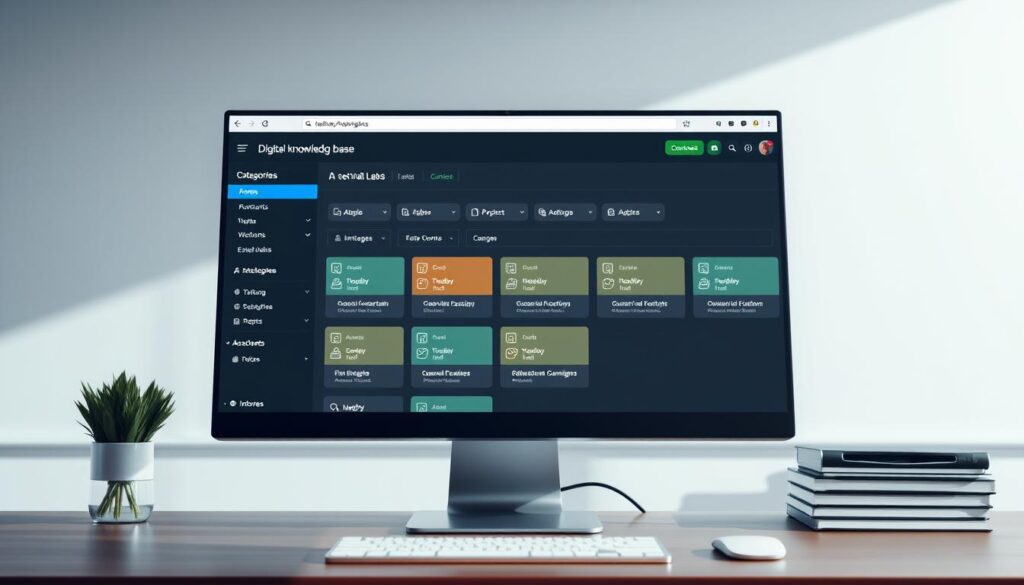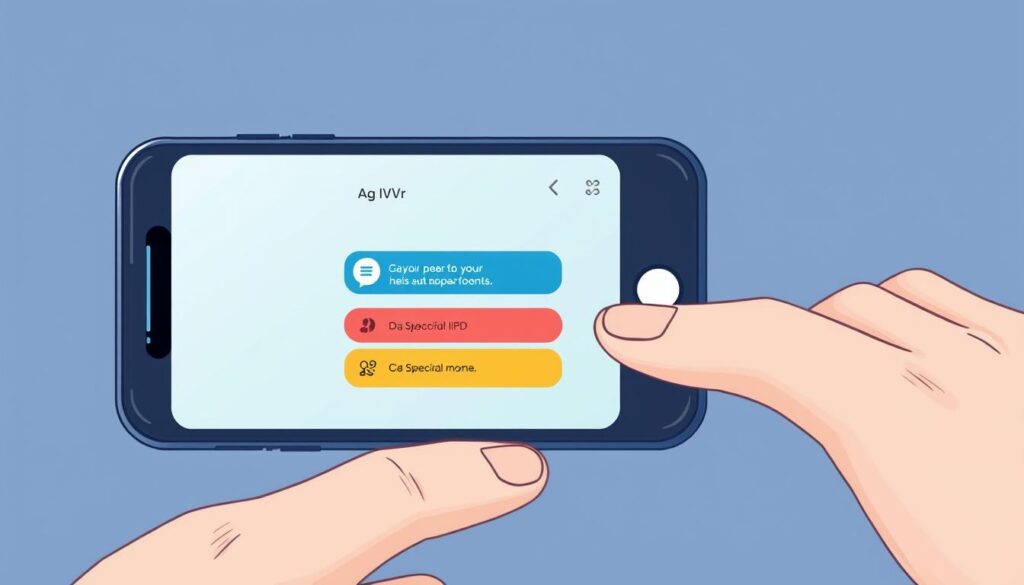Did you know that U.S. businesses lose a staggering $1.6 trillion annually due to poor customer service? High call volume is often a sign of a thriving business, but it can also be a recipe for disaster if not managed effectively.
A high call volume is typically defined as a call volume that is 10% above the expected level for a team. When this happens, maintaining quality customer service becomes a significant challenge.
This article will explore comprehensive strategies to help businesses handle high call volumes efficiently while enhancing the customer experience. By the end of this article, readers will learn how to reduce call pressure and improve overall customer satisfaction.
Understanding High Call Volume and Its Business Impact
High call volume can lead to operational challenges that affect not only customer experience but also business performance. To effectively manage these challenges, it’s essential to understand what constitutes high call volume, its common causes, and the costs associated with mismanaging it.
What Constitutes High Call Volume?
High call volume refers to a situation where a business receives an unusually large number of customer calls within a short period. This can strain the call center’s resources, leading to long wait times and decreased customer satisfaction. The threshold for what is considered “high” can vary depending on the business’s size and industry.
Common Causes of Call Volume Spikes
Call volume spikes can be triggered by various factors, including seasonal demand fluctuations, marketing campaigns, product launches, or unexpected events. Understanding these causes is crucial for businesses to prepare and allocate resources effectively. By analyzing historical data and market trends, companies can anticipate and manage high call volumes more efficiently.
The Cost of Mismanaged Call Volume
Mismanaging high call volume can have significant financial implications. According to call center statistics, $1.6 trillion is lost by U.S. businesses every year due to poor customer service. The table below highlights some key costs associated with mismanaged call volume:
| Cost Category | Description | Estimated Annual Loss |
|---|---|---|
| Customer Churn | Loss of customers due to long wait times | 31% of customers leave after one bad experience |
| Reputation Damage | Negative word-of-mouth and online reviews | Significant long-term brand damage |
| Employee Burnout | Turnover costs related to persistent high call volumes | High turnover rates among call center agents |
https://www.youtube.com/watch?v=H6X61n18hSU
Signs Your Business Is Struggling with Call Volume
When a business is inundated with calls, it can be a sign of success, but it also poses a risk of losing customers due to long wait times. Recognizing the signs that your business is struggling with call volume is crucial to taking proactive measures to mitigate its impact.
Key Performance Indicators to Monitor
To identify if your business is struggling with call volume, it’s essential to monitor key performance indicators (KPIs). These include average wait times, call abandonment rates, and customer satisfaction scores. Average wait times exceeding a few minutes can lead to increased customer frustration and potential loss of business. By closely monitoring these KPIs, businesses can identify areas for improvement.
Customer Feedback Warning Signs
Customer feedback is a valuable resource for understanding the impact of high call volumes on your business. Analyzing direct customer complaints about wait times, social media feedback, and declining customer satisfaction scores can provide early warning signs. Implementing effective feedback collection systems specifically for call experiences can help identify systemic issues. By examining patterns in customer feedback, businesses can differentiate between isolated incidents and systemic call handling problems.

By paying attention to these signs and taking proactive measures, businesses can reduce the risk of losing customers due to high call volumes. Effective call volume management is critical to maintaining a positive customer experience and ensuring long-term business success.
Implementing Self-Service Solutions
Self-service solutions offer a viable answer to the challenge of managing a large number of customer calls. By empowering customers to find answers or resolve issues on their own, businesses can significantly reduce the volume of calls directed to human agents.
Creating Comprehensive Knowledge Bases

A comprehensive knowledge base is crucial for effective self-service. It should be easily accessible and contain detailed, accurate information that addresses common customer queries. Customer self-service knowledge base software can help in creating and managing such databases.
Developing Effective FAQ Resources
FAQs are a staple of self-service, providing quick answers to frequent questions. To be effective, FAQs should be concise, clearly written, and easily searchable. They should also be regularly updated to reflect changing customer needs and product or service updates.
Interactive Voice Response (IVR) Best Practices

Interactive Voice Response (IVR) systems are a key component of self-service, offering callers a menu-driven interface to navigate through options and find the information they need without waiting for an agent. When implementing an IVR system, it’s crucial to keep the menu options simple and intuitive, ensuring that callers can easily find what they’re looking for. The use of voice recognition technology can further enhance the user experience by allowing callers to speak their requests rather than navigating through keypad options.
To maximize the effectiveness of an IVR system, businesses should focus on designing menus that are straightforward and minimize confusion. Regular testing and analysis of call data can help identify friction points and areas for improvement. Additionally, providing an easy escape route to a human agent when needed can help balance the efficiency of self-service with the need for personal assistance.
Strategic Call Routing and Queue Management
Effective call routing and queue management are crucial for handling high call volumes. By implementing the right strategies, businesses can ensure that customers are directed to the most suitable agents, reducing wait times and improving overall customer experience.
Intelligent Call Routing Technologies
Intelligent call routing software analyzes various factors, such as caller data and agent availability, to route calls efficiently. This technology enables businesses to provide personalized service, enhancing customer satisfaction.

Implementing VIP Call Queues
VIP call queues prioritize high-value customers, ensuring they receive prompt service. By implementing VIP queues, businesses can demonstrate their commitment to valued customers, fostering loyalty and retention.
Callback Options to Reduce Wait Times
The “callback” option allows customers to receive a call back later rather than waiting on hold. This feature saves customers time and hassle while enabling employees to distribute call volume more evenly throughout the day.
Key aspects to consider when implementing callback options include:
- Comprehensive overview of callback technology options and implementation approaches
- Analysis of customer preference data regarding callbacks versus holding
- Discussion of scheduling algorithms that optimize callback timing for both customers and agents
- Explanation of how to effectively communicate callback options to customers
- Guidance on setting appropriate expectations for callback timing and follow-through
By incorporating callback options, businesses can significantly reduce wait times, improving the overall customer experience.
Optimizing Staffing and Scheduling
Businesses can significantly improve their customer service by focusing on optimized staffing and scheduling. This involves a multi-faceted approach that includes forecasting call volume patterns, strategic scheduling during peak periods, and cross-training staff for flexibility.
Forecasting Call Volume Patterns
Accurate forecasting of call volume patterns is essential for effective staffing. By analyzing historical data and trends, businesses can predict peak periods and adjust their staffing accordingly. This helps in ensuring that there are sufficient staff members available to handle high call volumes without compromising on service quality.
Key factors to consider when forecasting call volume patterns include:
| Factor | Description | Impact on Staffing |
|---|---|---|
| Historical Data | Analysis of past call volumes | Helps in predicting future call volumes |
| Seasonal Trends | Variations in call volume due to seasonal changes | Requires adjustments in staffing during peak seasons |
| Marketing Campaigns | Impact of marketing campaigns on call volume | May require temporary increases in staffing |
Strategic Scheduling During Peak Periods
Strategic scheduling is critical during peak periods to ensure that customer calls are handled efficiently. This involves creating schedules that align with predicted call volume patterns, ensuring adequate staffing during busy times.
Effective scheduling strategies include:
- Flexible shift scheduling to cover peak periods
- Overtime for staff during extremely busy times
- Part-time staff to supplement full-time employees during peak hours
Cross-Training Staff for Flexibility
Cross-training staff is a valuable strategy for enhancing flexibility in call center operations. By training staff in multiple skills, businesses can better handle fluctuations in call volume and improve overall service quality.

- Increased team flexibility to handle different types of calls
- Improved employee engagement through varied work experiences
- Enhanced ability to absorb call volume fluctuations
Alternative Communication Channels to Manage High Call Volumes
Alternative communication channels offer a viable solution for businesses struggling with high call volumes. By diversifying the ways customers can interact with your company, you can distribute inquiries more evenly across different platforms, reducing the strain on your phone lines.
Live Chat and Chatbot Integration
Implementing live chat and chatbot integration can significantly enhance customer service. Live chat software allows customers to receive immediate assistance without having to call. When selecting a live chat software, consider one that integrates well with your existing CRM and customer service platforms.

Email and Social Media Support Strategies
Email and social media have become essential channels for customer support. Developing a comprehensive strategy that includes these channels can help manage high call volumes. Ensure that your customer service team is equipped to handle inquiries across these platforms efficiently.
Text Messaging for Customer Service
Text messaging is another effective channel for customer service. Implementing a business text messaging platform can help you communicate with customers quickly and efficiently. Consider SMS automation for routine interactions and ensure compliance with relevant regulations.

By adopting these alternative communication channels, businesses can not only manage high call volumes but also improve overall customer satisfaction. It’s about providing customers with options that suit their preferences, thereby enhancing their experience.
Technology Solutions for Call Center Efficiency
Effective call center management in the digital age relies heavily on the strategic implementation of technology solutions. By leveraging advanced technologies, businesses can significantly enhance their call center’s efficiency and better manage high call volumes.
Call Analytics and Performance Tracking
Call analytics and performance tracking are crucial for understanding call center dynamics and identifying areas for improvement. Utilizing call center analytics software enables businesses to monitor key performance indicators, analyze call data, and make informed decisions to optimize their operations.
Conversation Intelligence Software
Conversation intelligence software is another vital tool that helps in analyzing customer interactions. It provides insights into customer behavior, preferences, and pain points, allowing businesses to tailor their services accordingly. This technology can significantly enhance customer satisfaction and loyalty.
Automation Tools for After-Call Work
Automation is key to reducing the workload of call center agents and improving overall efficiency. Automation tools for after-call work can streamline tasks such as data entry, call documentation, and categorization. By automating these tasks, businesses can save time, reduce errors, and allow agents to focus on more critical tasks.
Implementing automation tools also improves data accuracy and compliance. For instance, technologies like Invoca enable automated QA, making the process easy, objective, and immediate. When integrating automation, it’s essential to balance technology with human oversight to maintain quality control.
By adopting these technology solutions, call centers can not only manage high call volumes more effectively but also enhance their overall operational efficiency. This, in turn, leads to improved customer satisfaction and reduced operational costs.
Conclusion: Creating a Sustainable High-Volume Call Strategy
Proactive planning is essential for businesses to manage high call volumes and prevent customer frustration during peak times. By implementing a combination of strategic call routing, self-service solutions, and optimized staffing, companies can ensure a seamless customer experience and maintain operational efficiency.
An integrated multi-channel approach is crucial for sustainable call management. This includes leveraging live chat, email support, and social media to provide customers with multiple avenues for communication. By doing so, businesses can distribute the volume of inquiries across various channels, reducing the strain on call centers.
The key to effective call management lies in the harmonious integration of technology and human elements. Advanced technologies like call analytics and conversation intelligence software enable businesses to gain insights into customer behavior and preferences, allowing for data-driven decisions.
To develop a continuous improvement cycle for call volume management, businesses should regularly assess their strategies and make adjustments as needed. By staying abreast of emerging trends in call center technology and evolving customer expectations, companies can maintain a competitive edge.
Ultimately, effective call management is about enhancing customer experience and driving business growth. By prioritizing call volume management as an ongoing strategic priority, businesses can foster customer loyalty and achieve long-term success.


